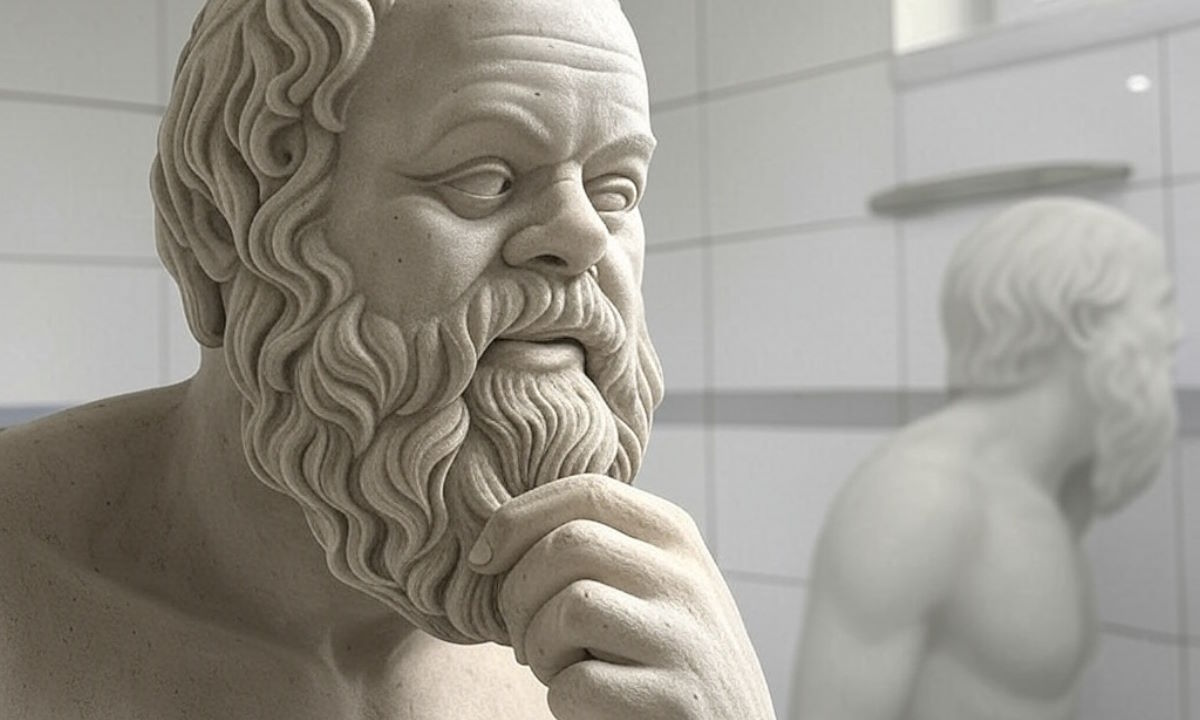"Irakliotissa" was unveiled by the Nazis in March 1944. It represented an important figure of the 3rd century AD society of Thessaloniki. It traveled to Austria, where it decorated the residences of Hitler and Goebbels. And it was the first repatriation of antiquity in 1947.
The excavation of "Irakliotissa" by the Nazis
March 1944. During excavations in the Courts Square of Thessaloniki by the Nazis for the construction of a trench, a brilliant work of ancient art came to light. It was the famous "Irakliotissa", which was 2.11 meters high and took its name from the technique of the laboratories of Heraclea Lucania, in Magna Grecia, Lower Italy. According to archeologists, the Roman sculpture represented an important figure in the society of Thessaloniki, probably Vevia Alexandra, a high priest of the 3rd century AD. Her long tunic, rich robe and impressive headdress showed that she came from an aristocratic family. Her stature and face showed grandeur.
Although the Nazis looted museums, monuments and archeological sites and carried out illegal excavations from the first days of the occupation, they did not attempt to steal the statue in the first phase but handed it over to the then Curator of Antiquities, Stylianos Pelekanidis. For the handover of the statue, a solemn ceremony was organized at the Roman monument of Rotonda, in the presence of high German officials and representatives of the Greek government. They wanted to show that they were different from other foreign archeologists, such as the British or the Americans, who looted cultural monuments, and that they respected the Greek cultural heritage.
The confiscation of the sculpture from Greece
A week after the great ceremony, the statue was removed from Greece by a telegram from Hitler. The artwork was transferred to a military exhibit in a museum in Vienna. According to the archeologist and museologist of the Archeological Museum of Thessaloniki, Mrs. Eleftheria Akrivopoulou, Hitler's officers used to send him looted works of art as gifts for his birthday. It is known that Hitler himself aspired to build his own museum in his hometown of Leeds, Austria, in order to make it a world cultural capital.
The return of the "aristocrat" to Thessaloniki
Due to the bombing raids, the "Aristocrat" of Thessaloniki, as it was called immediately after its appearance, was transferred to Hitler's mansion and later to Goebbels' residence. After the end of World War II, special units of the US Army found the sculpture in an abandoned salt mine in Austrian Alps. In 1945, the statue was taken to the Munich Central Collection Center along with dozens of other looted works of art, such as Jan van Eyck's "Temple of Ghent" and Michelangelo's "Madonna of Bruges". Following the actions of the Curator of Antiquities of Thessaloniki, St. Pelekanidis, "Irakliotissa" finally returned to Thessaloniki in 1947. The return of the statue to Greece took place long before the signing of the Hague International Convention in 1954, which protects the cultural property in case of war. In 1970, the UNESCO convention restricted the trade in antiquities and prohibited the purchase of antiquities of unknown origin.
The statue of a Nazi
The epilogue of the modern history of "Irakliotissa" was written somewhat unexpectedly, as Mrs. Akrivopoulou tells. A few years ago, the son of a German soldier involved in the excavation of the sculpture visited the Archeological Museum of Thessaloniki. He held a photo of "Irakliotissa" in his hand and asked to see "his father's statue". His father's stories were limited to the excavation of "Irakliotissa" and the brilliant descriptions of the city.
The 80-year-old man, proud of his father who was in Thessaloniki during the war, seemed to ignore the information presented to him by the archeologist about the true history of the sculpture. "It's unbelievable," he said. "I didn't know all this. You have so much information. They would give it back, wouldn't they? It was war. They probably wouldn't be able to."
Today "Irakliotissa" is on display at the Archeological Museum of Thessaloniki.











